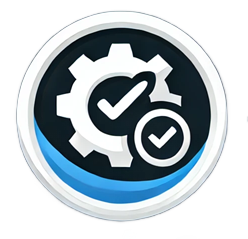
Introduction
A strong QA team isn’t just built on technical skills, it thrives on effective communication, structured feedback, and continuous improvement. However, many teams struggle with feedback, either because it’s delivered poorly, ignored, or taken personally.
A QA Lead must:
✅ Give clear, actionable feedback without causing friction.
✅ Receive and implement feedback effectively to improve processes.
✅ Foster a culture where feedback is seen as growth, not criticism.
Let’s break down how to create a feedback-driven QA team that thrives.
1. Why QA Needs a Strong Feedback Culture
Many teams see feedback as something negative, but in QA, feedback is essential to improving both testing processes and team dynamics.
Without proper feedback:
❌ Bugs go unnoticed due to unclear reporting.
❌ Testers repeat mistakes instead of improving.
❌ QA and developers create friction instead of collaboration.
Turning Feedback Into a Growth Tool:
✔ Encourage open discussions instead of waiting for sprint retrospectives.
✔ Make bug reports constructive by focusing on solutions, not just problems.
✔ Normalize feedback loops in both test execution and teamwork.
✔ Use feedback to enhance test case design, learning from past failures to refine testing strategies.
A feedback-driven team improves testing quality, fosters trust, and prevents recurring mistakes.
2. How to Give Feedback Without Causing Friction
QA Leads often need to tell developers their code isn’t working as expected. If not handled well, this can create tension between teams.
How to Deliver Feedback That Developers Will Actually Listen To:
🔹 Be Specific: Instead of “This feature is buggy,” say, “There’s a critical issue with X functionality that affects Y users.”
🔹 Use Data, Not Just Opinion: Show logs, screenshots, or test cases that validate your feedback.
🔹 Frame it as a Team Effort: Avoid blame, use phrases like “We noticed an issue here” instead of “You made a mistake here.”
🔹 Understand Development Constraints: If a feature cannot be easily fixed, collaborate on workarounds that minimize risk.
Bug Reports Should Focus on Solutions, Not Just Problems
While QA is not expected to code, having coding knowledge helps when suggesting solutions. You can provide a user’s perspective while also relaying the issue in a way that developers can quickly grasp. A well-structured bug report should include:
- The cause: What part of the functionality is breaking.
- The expected behavior: How it should work.
- The possible solution: What can be adjusted to fix it.
- Business Impact: How the issue affects users, revenue, or system reliability.
By bridging the gap between user experience and technical details, QA helps devs identify logical fixes faster, making bug resolution more efficient.
When feedback is clear, factual, and non-confrontational, developers are more likely to act on it.
3. How to Receive Feedback Without Taking It Personally
Many testers struggle with receiving feedback, especially when it challenges their work. However, learning to take feedback without ego is a critical skill for growth.
How to Accept Feedback Like a Pro:
✔ Separate Yourself From Your Work: A failed test case or missed bug isn’t a reflection of your worth,it’s an opportunity to improve.
✔ Ask for Clarification: If feedback is vague, request specifics so you know what to improve.
✔ Own Your Mistakes: A QA professional who acknowledges mistakes and improves earns more respect than one who gets defensive.
✔ Learn from Developer Feedback: Sometimes, devs provide insights that improve the testing process, be open to adjusting test cases based on valid input.
A strong QA Lead models a feedback-positive mindset for the entire team.
4. Creating Feedback Loops That Strengthen QA Teams
For feedback to work, it must be structured and continuous—not just something that happens in retrospectives.
How to Implement Continuous Feedback Loops:
🔹 Code Review + Test Review: Just as Devs review each other’s code, QA should review each other’s test cases to catch blind spots.
🔹 Pair Testing Sessions: Testers should work alongside developers occasionally to exchange real-time feedback.
🔹 Bug Hunt Challenges: A structured event where QA and Devs actively look for defects together, strengthening collaboration.
🔹 Automated Test Reports: Leverage automation logs and AI-powered test insights to provide continuous, objective feedback on test performance.
🔹 Feedback Tracking: Maintain a backlog of test improvements based on prior issues to enhance future test coverage.
When feedback becomes part of daily operations, it stops feeling personal and becomes an expected part of growth.
Conclusion
QA teams thrive on structured, constructive feedback. Whether it’s reporting bugs, coaching testers, or refining processes, the ability to give and receive feedback properly makes a team stronger.
To build a feedback-driven QA team:
✔ Give specific, data-driven feedback that focuses on solutions.
✔ Accept criticism without ego and use it for growth.
✔ Integrate feedback loops into daily operations, not just retrospectives.
✔ Refine testing strategies by learning from past feedback and failures.
A QA team that embraces feedback doesn’t just test better—they work better together.
